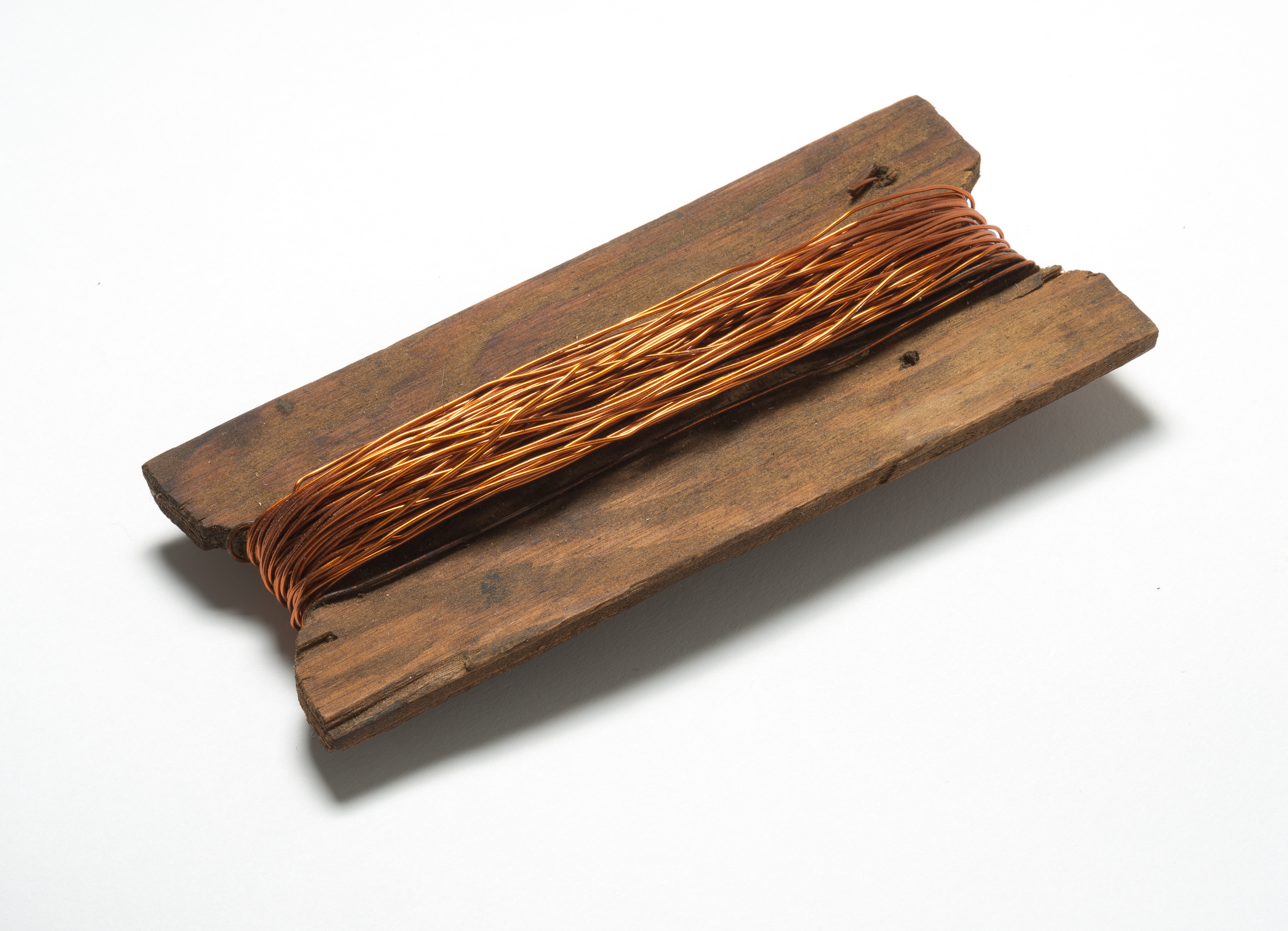Why don't I throw much away? There many layers to this answer. I see the value in many things we just discard in todays western societies. It just has always seemed natural that instead of throwing something out, meaning putting it into the garbage, where it will be trucked to some landfill to be buried into the ground (this is the out of sight out of mind game we play), I would rather hold onto things so someone else might use it, or some part of it. or at least it might be re-cycled in some fashion or another, or if it can't be used for anything, often it will still have some scrap value. Is that not a better use of these raw materials? Is this not better for the planet?
In this section I share with you the evolution of hundreds of pieces of copper coated wire collected over many years. When I started I had no real idea except to create a sphere from all my old wire. A project like this happens over many years. I start and stop many times, but it is ongoing. Maybe I'm a turtle in some dimension, but slowly over time and many thoughts the pieces comes to life.
In this section I share with you the evolution of hundreds of pieces of copper coated wire collected over many years. When I started I had no real idea except to create a sphere from all my old wire. A project like this happens over many years. I start and stop many times, but it is ongoing. Maybe I'm a turtle in some dimension, but slowly over time and many thoughts the pieces comes to life.
-
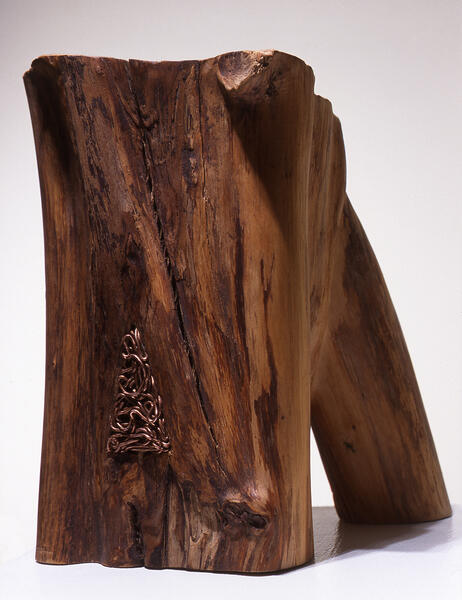 Optimismwood & copper wire, 7"x 4"x 5"
Optimismwood & copper wire, 7"x 4"x 5" -
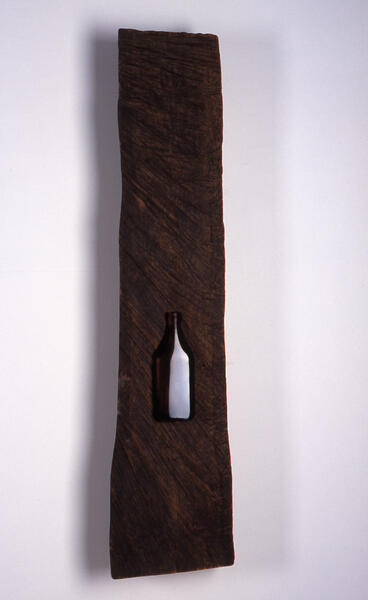 Hope and Reasonwood and glass, 36"x 8"x 3" This piece of locust was something left from wood I ripped to make a retaining wall over 20 years ago. It hung around and hung around and I'm not sure why, but it did. What I mean by this is that very easily it could have gotten used in any number of projects around here, but it did not and eventually we developed a rapport. I then knew that at some time it would become part of a piece. The bottle has a whole different history. I've lived here for 30 years and have never thrown any bottle away that has shown up here. This bottle is one of a number of bottles that carried alternative elixirs we were taking at one time. I was drawn to the bottles instantly and fooled around with different ways to bring them into my work. Then this idea of tightly chiseling a cavity into the locust wood hit me. The space I made for the bottle is so snug that once I firmly forced the bottle in it stay there on its own
Hope and Reasonwood and glass, 36"x 8"x 3" This piece of locust was something left from wood I ripped to make a retaining wall over 20 years ago. It hung around and hung around and I'm not sure why, but it did. What I mean by this is that very easily it could have gotten used in any number of projects around here, but it did not and eventually we developed a rapport. I then knew that at some time it would become part of a piece. The bottle has a whole different history. I've lived here for 30 years and have never thrown any bottle away that has shown up here. This bottle is one of a number of bottles that carried alternative elixirs we were taking at one time. I was drawn to the bottles instantly and fooled around with different ways to bring them into my work. Then this idea of tightly chiseling a cavity into the locust wood hit me. The space I made for the bottle is so snug that once I firmly forced the bottle in it stay there on its own -
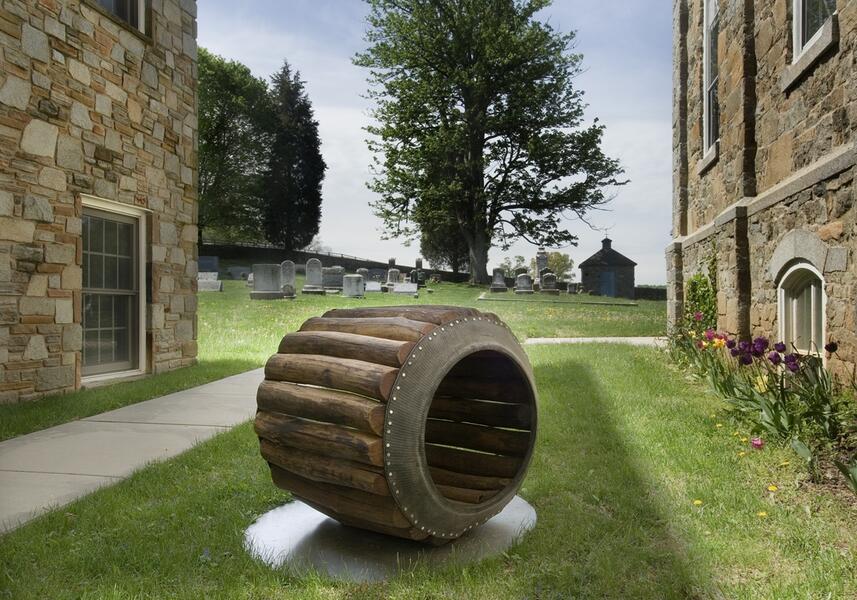 Forest Wheel #3wood, tracter tire sidewall, & stainless steel bolts 3'x 3'x 3' Many forests have remnants of the Industrial Revolution.
Forest Wheel #3wood, tracter tire sidewall, & stainless steel bolts 3'x 3'x 3' Many forests have remnants of the Industrial Revolution. -
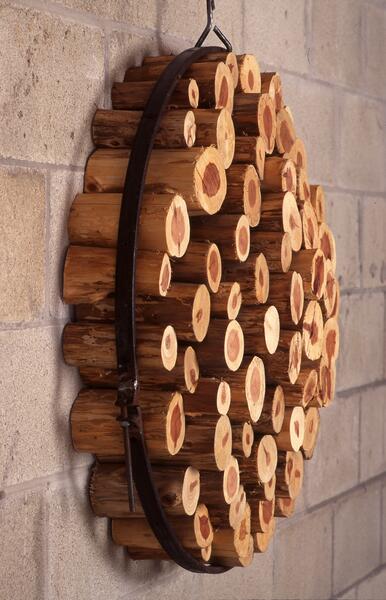 Wall Mandala (part of the 500 yr, Old Tree series)wood & steel, 28"x 28"x 6" Years ago I made a number of outdoor installations using many different woods from the forest where I work. In a way it was cleaning up of the forest of lots of the fallen trees. This was a smaller sketch that gave the feeling of the larger pieces
Wall Mandala (part of the 500 yr, Old Tree series)wood & steel, 28"x 28"x 6" Years ago I made a number of outdoor installations using many different woods from the forest where I work. In a way it was cleaning up of the forest of lots of the fallen trees. This was a smaller sketch that gave the feeling of the larger pieces -
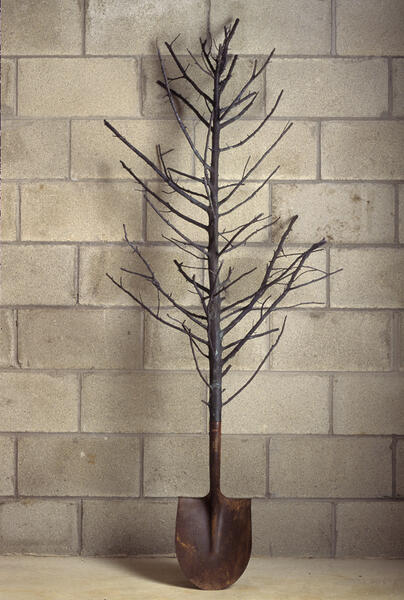 Still Digging Our Own Graves #5bronze & steel, 5'x 2'x 2" This is part of a series I started many years ago. The original pieces were made by creating the shovel handles with the top of fallen cedar trees. This second generation is made by tranforming the cedar tree handle into bronze. It is amazing how the bronzing process can pick up every detail from the cedar tree. Often people don't even realize it's not wood.
Still Digging Our Own Graves #5bronze & steel, 5'x 2'x 2" This is part of a series I started many years ago. The original pieces were made by creating the shovel handles with the top of fallen cedar trees. This second generation is made by tranforming the cedar tree handle into bronze. It is amazing how the bronzing process can pick up every detail from the cedar tree. Often people don't even realize it's not wood. -
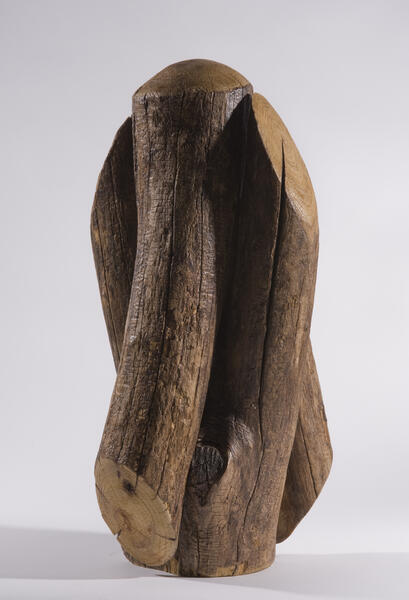 Two Into Onewood, 18"x 10"x 10" In this study I've joined two crotches together to create one from.
Two Into Onewood, 18"x 10"x 10" In this study I've joined two crotches together to create one from. -
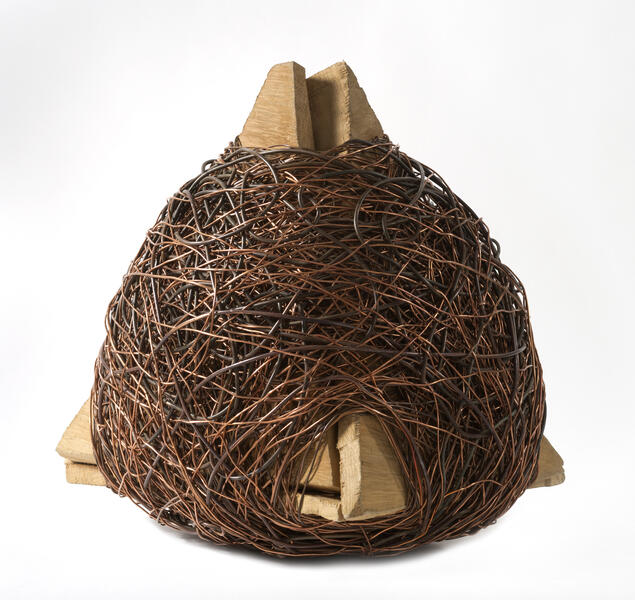 Groping For Symmetrycopper wire & wood, 16"x 16"x 16" I made this crude tetrahedron from chain-sawed wood. Then over a couple of years I wrapped it with used copper wire seaching for some kind of balance. Maybe that what I'm looking for on some level in my life and works, a sense of balance.
Groping For Symmetrycopper wire & wood, 16"x 16"x 16" I made this crude tetrahedron from chain-sawed wood. Then over a couple of years I wrapped it with used copper wire seaching for some kind of balance. Maybe that what I'm looking for on some level in my life and works, a sense of balance. -
 Ode To Cloywood & copper wire, 8"x 4"x 2" Cloy Gahagan was my grandfather. Each day I grow more like him, though he has been gone for over ten years now.
Ode To Cloywood & copper wire, 8"x 4"x 2" Cloy Gahagan was my grandfather. Each day I grow more like him, though he has been gone for over ten years now. -
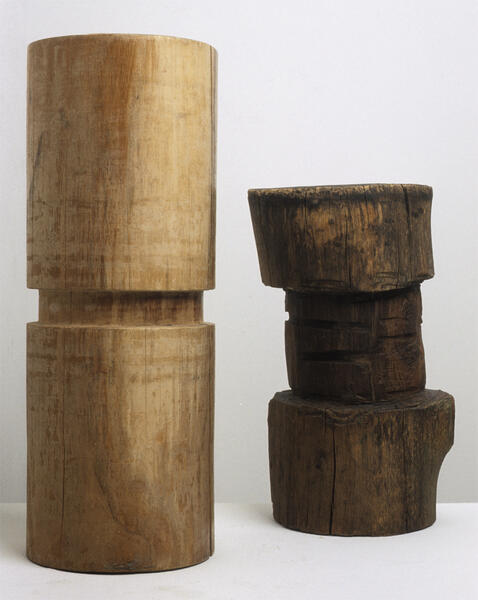 Twins: Form and Functionwood, 16"x 14"x 6" These were two very different funky rollers that talked me into becoming one piece.
Twins: Form and Functionwood, 16"x 14"x 6" These were two very different funky rollers that talked me into becoming one piece. -
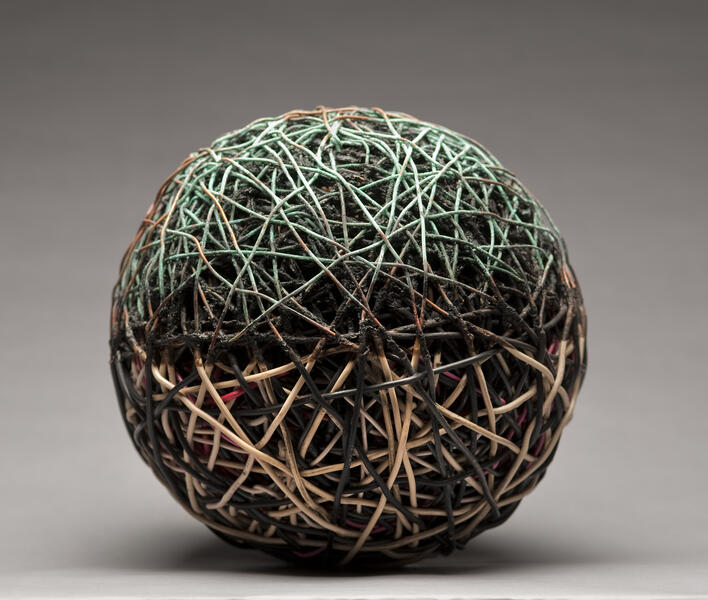 Divine Circles1'x1'x1' copper coated wire At every stage of a piece I stop to take in what is going on. What has happened here? Many pieces are actually a series of pieces that you just keep transforming one into another. This one could have been done at many different points along the way, but I wanted to keep pushing it.
Divine Circles1'x1'x1' copper coated wire At every stage of a piece I stop to take in what is going on. What has happened here? Many pieces are actually a series of pieces that you just keep transforming one into another. This one could have been done at many different points along the way, but I wanted to keep pushing it.







